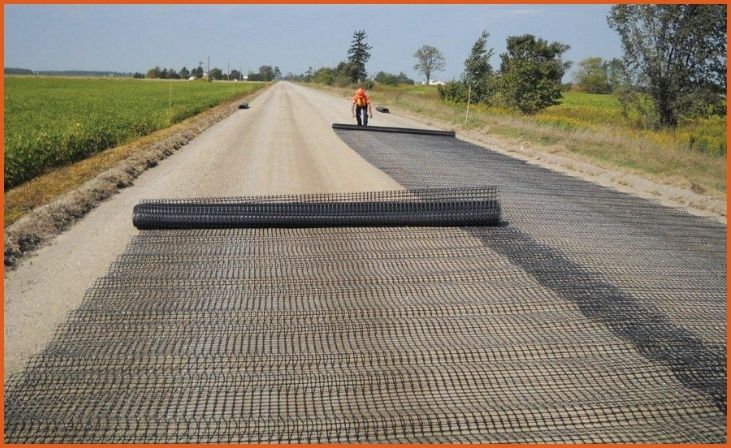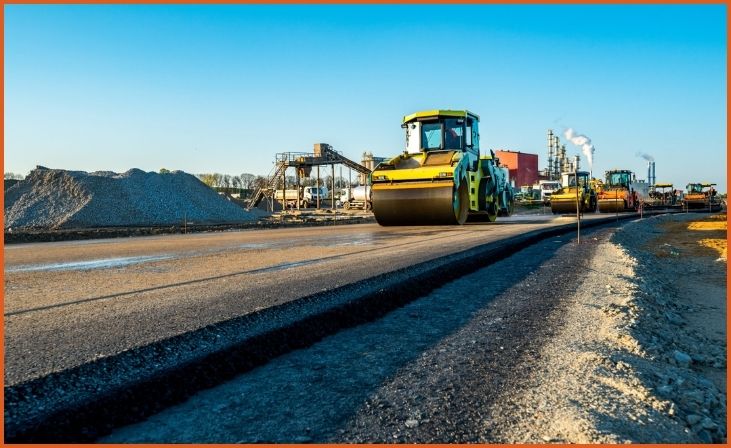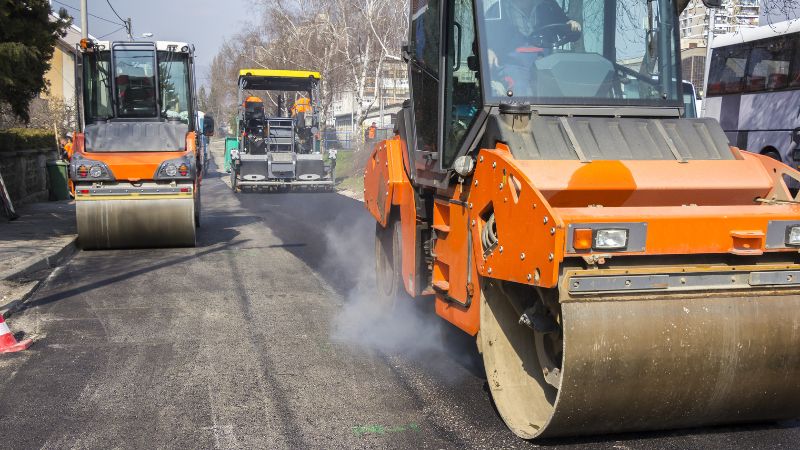In the ever-evolving world of construction, innovative pavement techniques and products are transforming the way we build and maintain our roads. From sustainable materials to advanced technologies, these innovations promise not only to enhance the durability and longevity of our pavements but also to reduce environmental impact and improve safety. This blog delves into eight groundbreaking pavement techniques and products that are setting new standards in the industry. Whether you’re a contractor, engineer, or simply someone interested in cutting-edge infrastructure, these advancements are paving the way to a smarter, more sustainable future.
8 Innovative Pavement Techniques And Products
1. Recycled Asphalt Pavement (RAP)

Recycled Asphalt Pavement (RAP) is a groundbreaking technique that involves reusing old asphalt materials in new pavement projects. This method not only reduces the need for new raw materials but also helps in managing the ever-increasing waste from old pavements. RAP is created by milling or crushing existing asphalt, which is then blended with fresh asphalt or used as a base layer. The benefits of RAP include cost savings, reduced environmental impact, and improved pavement performance. Additionally, RAP has been shown to enhance the durability and longevity of roads, making it a sustainable choice for urban infrastructure projects. By incorporating RAP, cities can reduce landfill waste and decrease their carbon footprint, contributing to a more sustainable future.
Also Read:- How To Remove Old Oil Stains From Asphalt
2. Porous Asphalt
Porous asphalt is an innovative pavement product designed to improve water drainage and reduce surface runoff. This type of asphalt features a network of interconnected voids that allow water to pass through the pavement and into the underlying soil. This reduces the risk of flooding, improves water quality by filtering pollutants, and recharges groundwater supplies. Porous asphalt is particularly beneficial in urban areas where impervious surfaces are common. It also helps mitigate the heat island effect by allowing water to evaporate, which cools the surrounding area. The durability and flexibility of porous asphalt make it suitable for various applications, including parking lots, driveways, and low-traffic roads.
3. Warm Mix Asphalt (WMA)
Warm Mix Asphalt (WMA) is a revolutionary technology that allows asphalt to be mixed and laid at lower temperatures compared to traditional hot mix asphalt. This results in significant energy savings and reduced emissions of greenhouse gases and volatile organic compounds. WMA improves the working conditions for construction workers by lowering the exposure to high temperatures and fumes. Additionally, it extends the paving season, as WMA can be used in cooler temperatures without compromising the quality of the pavement. The benefits of WMA also include enhanced compaction and improved workability, leading to longer-lasting and more resilient pavements. Its environmental advantages and performance benefits make WMA an attractive option for sustainable road construction.
4. Geosynthetics in Pavement Design

Geosynthetics, such as geotextiles, geomembranes, and geogrids, are increasingly used in pavement design to enhance performance and extend the lifespan of roads. These materials are incorporated into the pavement structure to improve stability, drainage, and load distribution. Geosynthetics help prevent soil erosion, reduce the risk of pavement failure, and enhance the overall durability of the road. By reinforcing the pavement layers, geosynthetics minimize maintenance needs and associated costs. Additionally, they contribute to sustainable construction practices by reducing the amount of raw materials required. The versatility of geosynthetics makes them suitable for various applications, including highways, airport runways, and unpaved roads.
5. Ultra-High Performance Concrete (UHPC)
Ultra-High Performance Concrete (UHPC) is a cutting-edge material that offers exceptional strength, durability, and resistance to environmental degradation. UHPC is characterized by its dense microstructure and high compressive strength, making it ideal for demanding applications such as bridge decks, overlays, and high-traffic pavements. The superior durability of UHPC reduces the need for frequent repairs and maintenance, resulting in cost savings and extended service life. Additionally, UHPC’s resistance to freeze-thaw cycles, chemical attack, and abrasion makes it a reliable choice for harsh environments. The use of UHPC in pavement construction not only enhances the performance of the infrastructure but also contributes to sustainable development by minimizing resource consumption and extending the lifespan of the roads.
6. Self-Healing Asphalt

Self-healing asphalt is an innovative product designed to repair its own cracks and extend the lifespan of pavements. This technology incorporates microcapsules filled with rejuvenators into the asphalt mix. When cracks form, these microcapsules break open, releasing the rejuvenators that seal the cracks and restore the asphalt’s integrity. Self-healing asphalt reduces the need for frequent maintenance and repairs, leading to cost savings and improved road performance. It also enhances the durability and resilience of pavements, making them more resistant to damage from traffic and environmental factors. The development of self-healing asphalt represents a significant advancement in pavement technology, offering a sustainable solution to the challenges of maintaining road infrastructure.
7. Reflective Pavements
Reflective pavements, also known as cool pavements, are designed to reflect more sunlight and absorb less heat compared to traditional pavements. This reduces the surface temperature of the pavement, mitigating the urban heat island effect and improving the comfort of urban environments. Reflective pavements can be created using light-colored materials, special coatings, or innovative asphalt and concrete mixes. By lowering pavement temperatures, reflective pavements help reduce energy consumption for cooling buildings and decrease the risk of heat-related illnesses. Furthermore, by decreasing cycles of heat expansion and contraction, they may increase the pavement’s lifetime. The use of reflective pavements is a promising strategy for creating more sustainable and comfortable urban areas.
8. Perpetual Pavement

Perpetual pavement is a long-lasting pavement design concept that aims to create roads with an indefinite lifespan. This is achieved by constructing a strong, flexible base layer that can withstand repeated traffic loads without significant structural damage. The surface layer, which experiences the most wear and tear, can be periodically replaced without disturbing the underlying layers. Perpetual pavement reduces the need for frequent reconstruction, minimizing traffic disruptions and lowering maintenance costs. Additionally, the use of durable materials and advanced construction techniques ensures the pavement’s resilience and performance over time. The perpetual pavement concept represents a shift towards sustainable infrastructure development, emphasizing longevity and efficiency in road construction and maintenance.
Also Read:- Tips For Quality Asphalt Pavements
Conclusion
The world of pavement technology is rapidly advancing, bringing forth solutions that are more durable, sustainable, and efficient. By embracing these innovative techniques and products, we can build roads that withstand the test of time while minimizing environmental impact. Stay informed and ahead of the curve by exploring and implementing these groundbreaking advancements in your next project. The future of pavement is not just about longevity but also about creating a sustainable and safe infrastructure for generations to come.
FAQs
What are some benefits of using innovative pavement techniques?
Innovative pavement techniques offer benefits such as increased durability, reduced maintenance costs, improved safety, and a lower environmental impact.
Are sustainable materials used in modern pavement techniques?
Yes, many modern pavement techniques incorporate sustainable materials like recycled asphalt and eco-friendly binders to reduce environmental impact.



